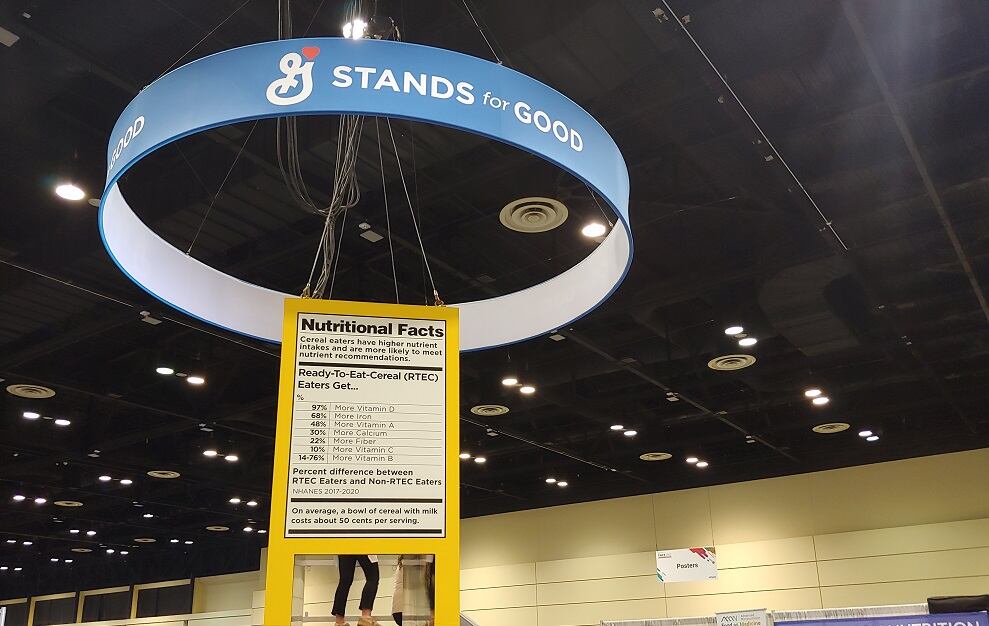At the same time, the company is ramping up investments in media and innovation to help preserve elasticities and build unit demand by boosting consumers’ value perceptions of its products, executives said during the company’s third quarter sales and earnings call yesterday.
This strategy also would allow General Mills to hedge against additional possible price hikes, should they be necessary.
“We continue to forecast total input cost inflation of approximately 14 to 15% for the full year in fiscal 2023, including double-digit inflation in the second half. Looking beyond this fiscal year, we expect inflation to decelerate but remain above historical averages” in the mid-single-digit range for total input costs in fiscal 2024, CEO Jeff Harmening told investment analysts.
While commodity costs are coming down from their peaks, CFO Kofi Bruce attributed the ongoing inflation to continued labor pressure, energy costs and “other conversion costs that go into taking raw materials, creating value-added inputs that go into our products.”
Other harder to calculate but still potentially impactful costs contributing to inflation are added pressure from supply chain disruptions and product changes that allowed the company to continue to serve in a disrupted environment, Bruce said.
On that note, Harmening acknowledged General Mills service levels still are below its “normal range of 98 to 99%,” but it is improving and should reach 90% in the US by the end of the quarter.
Strategies for managing inflation
To manage rising inflation, Bruce said General Mills will “approach the fiscal year with an eye towards leveraging first, the productivity we get through our HMM cost savings programs. And to the extent that there is additional margin that we need to protect, we’ll use the other levers we have up to and including SRM.”
The company also will take into account inflation as it plans merchandising and marketing, said Jon Nudi, president of North American Retail at General Mills.
He explained that while General Mills is “getting back into merchandising in some categories that we couldn’t support from a service standpoint over the last few years,” it also knows that “ everyone in the industry is dealing with increased costs and inflation as well, so we expect to make sure that we’re rational from a merchandising standpoint as we move forward.”
Given that price points were up double digits across General Mills’ categories, the company is loath to pile on extra hikes, preferring instead to leverage price architecture and mix, Nudi said.
“We are much more sophisticated today than we were even a few years ago, and I think that’s helping us to make the right moves in the market, which is helping with the elasticities as well. So, it’s something we’ll stay focused on,” he explained.
Marketing, innovation investments keep consumers engaged
If price increases become necessary, General Mills is laying the foundation to justify them by investing in marketing and innovation – strategies that also should protect market share from private label if the economy drops into a recession.
“If we do run into a recessionary period, historically, we’ve held up pretty well. Obviously, private label does well during that period, but we’ve held our own and hold share relatively flat. It is really the third and fourth tier players in categories that seem to get hit the hardest from a share staple,” Nudi said.
General Mills’ ability to hold its own against private label “is not really an accident,” but rather can be attributed to its investment in consumer spending, Harmening said.
“We’ve been investing in marketing. And so, you see, over the last four years, our compound annual rate of growth and marketing spend is up, I think, about 4% or 5%” to keep pace with pound growth if not sales growth, Harmening said.
Explaining that “healthy investments in brands is critical for long-term growth,” Harmening said General Mill is investing behind “compelling, digitally enabled, high ROI campaigns, such as Cheerios’ heart health, 20% More Meat news on Blue Buffalo’s Wilderness line and our latest global Haagen-Dazs campaign.”
Innovation reinforces elasticities
General Mills also is investing in innovation to keep consumers engaged with brands and drive sales.
“Over the past three years, we’ve kept up our innovation pressure, and our new product retail sales have been 30% higher than the category average. We are continuing that focus with our fiscal 2023 innovation,” Harmening said.
As examples, he pointed to the company’s recent launch of mini versions of its Cinnamon Toast Crunch, Reese’s Puffs and Trix.
Many of these strategies already are paying off for General Mills, which reported net sales of $5.1b – a 13% increase – in its third quarter, along with a 16% increase in organic net sales. Operating profit also was up 20% in constant currency and earnings per share were up 17%.
“With stronger and more broad-based business momentum, we have raised our guidance and now expect organic net sales to increase 10 to 11%, adjusted operating profit to grow 7 to 8% in constant currency, and adjusted diluted earnings per share to grow 8 to 9% in constant currency,” Kofi said.
He added: “These profit and EPS ranges include a three-point headwind from divestitures and an estimated one-point headwind from the ice cream recall.”




